Crimson Waxcap / Autumn / Winter / Edible
Prepare to be enchanted by the radiant beauty and culinary splendor of the Crimson Waxcap, scientifically known as Hygrocybe punicea.
In this blog post, we embark on a journey to discover the captivating qualities and edible delights of this remarkable mushroom. With its vibrant crimson caps and velvety texture, the Crimson Waxcap stands as a jewel among fungi, enticing both foragers and gastronomes alike.
Join us as we delve into the habitat, identification, and foraging techniques necessary to unlock the treasures of this edible fungus. From elegant salads to gourmet mushroom dishes, Hygrocybe punicea adds a touch of color and flavor to elevate culinary creations. Let’s celebrate the gastronomic wonders of the Crimson Waxcap, indulging in the luscious splendor it offers, as we embrace the natural abundance and delectable flavors provided by nature herself.
Scientific Name
Hygrocybe punicea
Common Names
Crimson Waxcap, Crimson Wavy cap
Family
Hygrophoraceae
Habitat
They are found in unimproved fields and pasture.
Description
One of the largest Waxcaps, they’re not very common but in the right conditions can appear in quite large groups. They prefer acidic soils.
Identifying Features:
Cap:
They are convex when young becoming bell shaped and then almost flat or upturned with age. They are deep red when young but the colour fades from the centre to orange or yellow. Slimy when young and wet and up to 10cm across. The flesh is pale yellow to white. They are normally found between September and December.
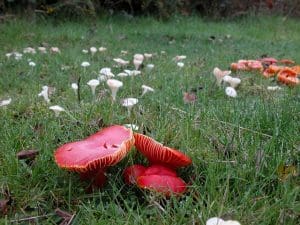
Stem
The stems are fairly stout. The colour changes from white at the base through yellow and then red as you move towards the cap. Hollow and up to 12cm long.
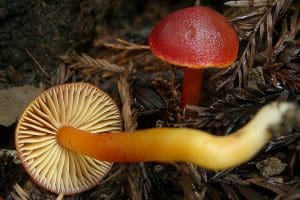
Gills
Yellow when young becoming redder with age. The gills can be adnexed or almost free and are fairly widely spaced.
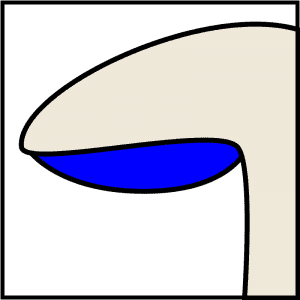
Smell:
No strong smell.
Spores:
White
Uses
In food
They are edible but due to habitat loss and changes in land use, Waxcaps are getting rarer and rarer. I personally don’t eat them for this reason and the fact that they are pretty insubstantial. You’re best just taking some photos.
Known hazards
None known.
Potential lookalikes
They could be confused with the Scarlet Waxcap (Hygrocybe coccinea), but this is typically smaller, has reddish flesh and is a lot more common.
The Splendid Waxcap (Hygrocybe splendidissima) looks very similar and in the past it was thought to be the same species but the Splendid Waxcap has a twisted or folded stem.
The Blackening Waxcap (Hygrocybe nigrescens) could also be confused but as the name suggests this blackens when damaged.
Extra Notes from the Foragers
For a long time it was thought that Waxcaps were saprotrophic feeding on the dead root systems of grass. Modern research suggests that they have a symbiotic relationship with mosses.
The name Hygrocybe means ‘watery head’.
Reference:
https://www.aber.ac.uk/waxcap/index.shtml



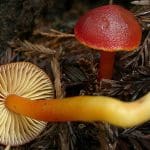
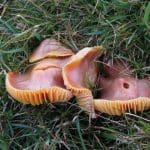
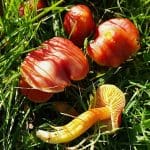
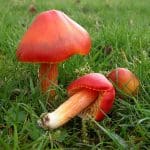
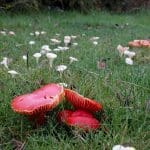
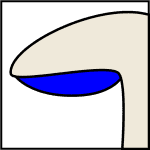



Leave a Reply
You must be logged in to post a comment.